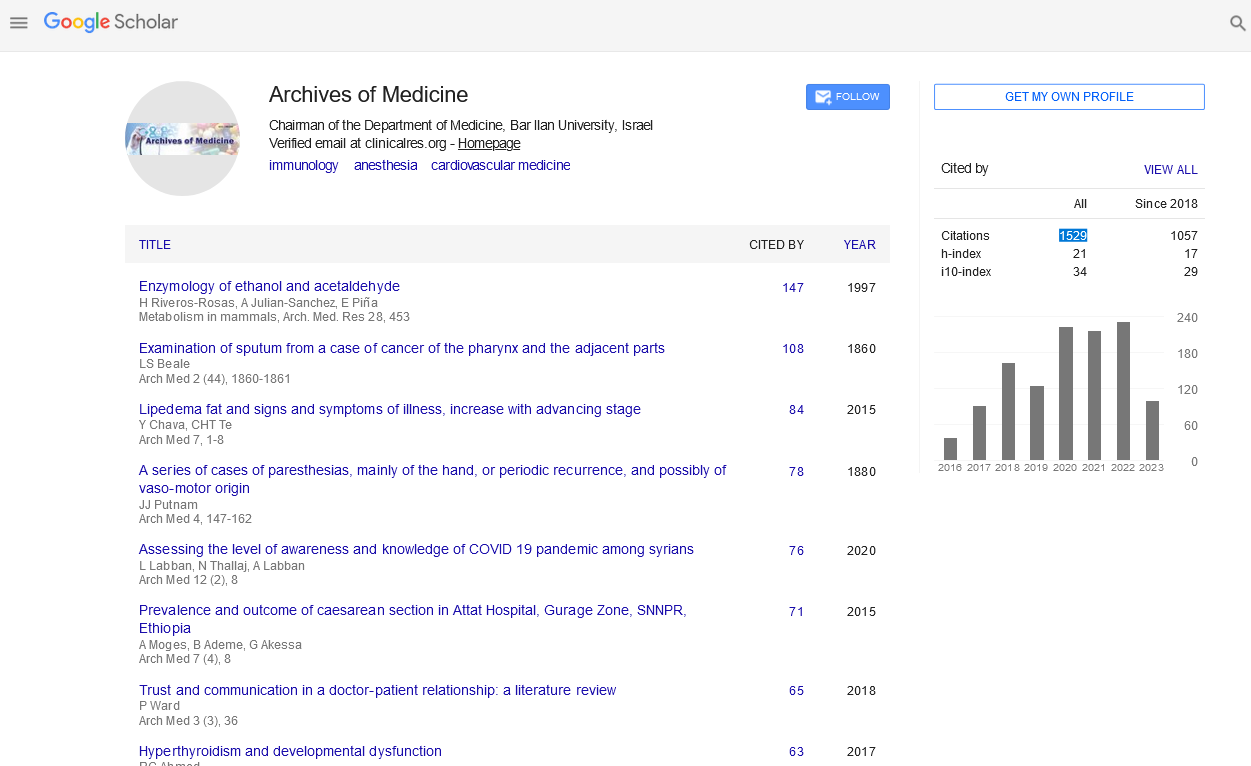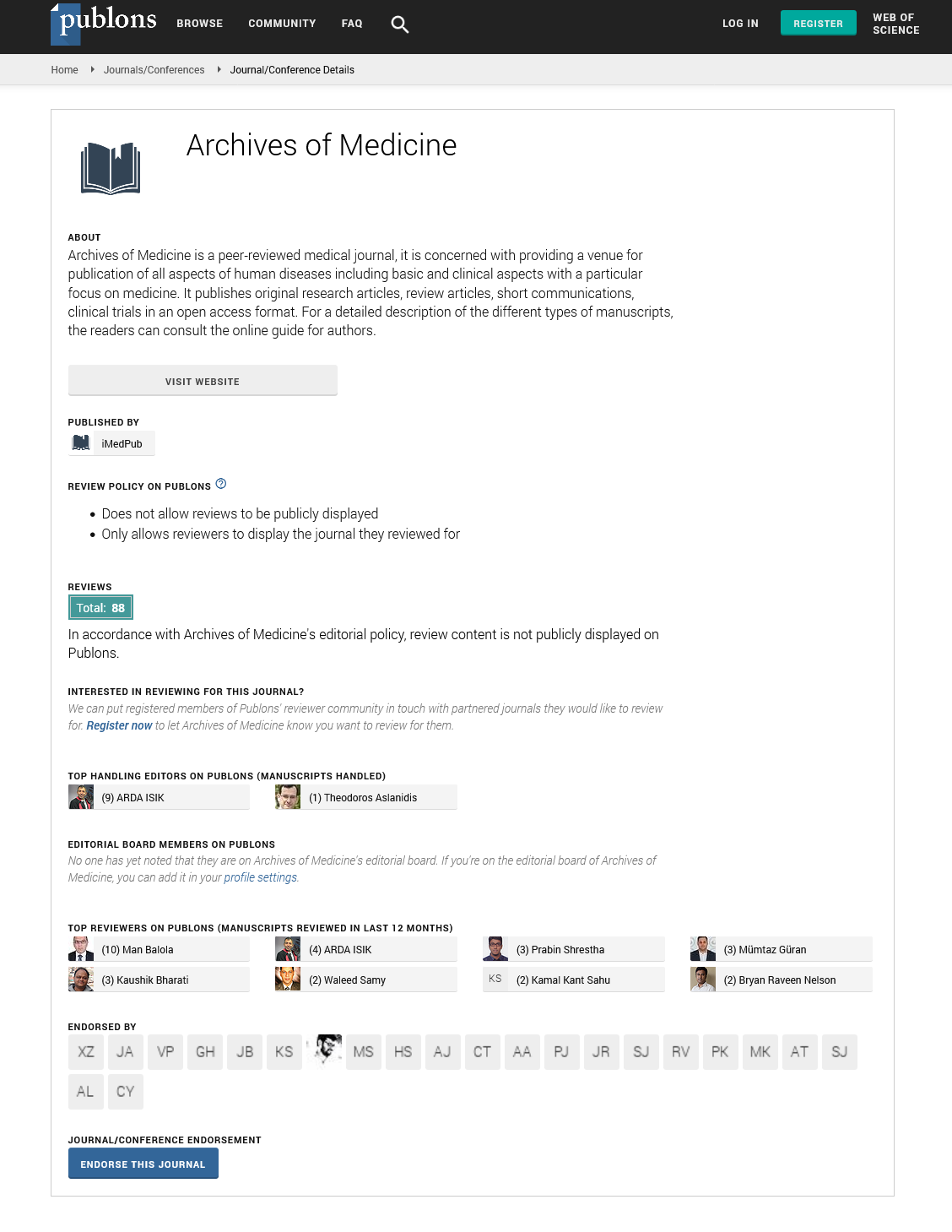Opinion - (2024) Volume 16, Issue 6
The evolving landscape of pediatric immunization: Addressing vaccine hesitancy in the digital age
Marlowe Bennett*
Department of Pediatrics, Weill Cornell Graduate School of Medical Sciences, New York, NY, USA, USA
*Correspondence:
Marlowe Bennett, Department of Pediatrics, Weill Cornell Graduate School of Medical Sciences, New York, NY, USA,
USA,
Email:
Received: 24-Oct-2024, Manuscript No. ipaom-25-15460;
Editor assigned: 26-Oct-2024, Pre QC No. P-15460;
Reviewed: 07-Nov-2024, QC No. Q-15460;
Revised: 12-Nov-2024, Manuscript No. R-15460;
Published:
19-Nov-2024
Introduction
Pediatric immunization has long been one of the most
significant public health achievements, responsible for
the prevention and near-eradication of many infectious
diseases that once claimed millions of young lives. From the
introduction of the smallpox vaccine to the widespread use of
immunizations against polio, measles, and whooping cough,
vaccines have fundamentally reshaped child health outcomes
globally. However, in recent decades, the issue of vaccine
hesitancy has emerged as a significant barrier to maintaining
high immunization rates. Fueled by misinformation, distrust
in healthcare systems, and the rapid proliferation of unverified
content online, vaccine hesitancy threatens to reverse decades
of progress in pediatric health. The rise of social media and
digital platforms has amplified the voices of vaccine-skeptical
communities, allowing misinformation to spread widely
and rapidly. This has created new challenges for healthcare
professionals, policymakers, and public health advocates,
who must navigate this evolving landscape to ensure children
receive timely and essential vaccinations. As the COVID-19
pandemic demonstrated, public trust in immunization programs
is critical not only for preventing individual illness but also for
safeguarding community health through herd immunity.
In this article, we explore the complex interplay between
vaccine hesitancy and the digital age, highlighting the factors
that contribute to vaccine reluctance, the role of online
misinformation, and strategies to combat these challenges.
Through a combination of evidence-based approaches,
enhanced communication strategies, and digital literacy
initiatives, pediatricians and healthcare stakeholders can
work towards restoring trust and ensuring comprehensive
immunization coverage for all children [1].
Description
The importance of pediatric immunization
Vaccination is one of the most cost-effective and
impactful public health interventions. According to the
World Health Organization (WHO), immunization prevents
2 to 3 million deaths annually and protects children from
diseases such as diphtheria, tetanus, hepatitis B, and more.
In pediatric populations, early vaccination is essential for
building immunity during critical developmental stages.
Immunization not only protects individual children but also
contributes to herd immunity, reducing the risk of disease
outbreaks and protecting vulnerable populations who cannot
be vaccinated due to medical conditions. Despite the clear
benefits, global immunization rates have plateaued or declined
in some regions, with outbreaks of measles, mumps, and other
vaccine-preventable diseases resurging. Vaccine hesitancy,
defined by the WHO as the reluctance or refusal to vaccinate
despite availability, has been identified as one of the top ten
global health threats. Factors contributing to hesitancy are
multifaceted, involving concerns about vaccine safety, distrust
in pharmaceutical companies, religious or cultural beliefs, and
complacency [2].
Vaccine hesitancy in the digital age
The digital age has revolutionized access to health
information, empowering parents to make informed decisions
about their children's health. However, this democratization of
information comes with challenges. Social media platforms,
online forums, and messaging apps have become fertile ground
for the spread of vaccine misinformation. Conspiracy theories,
anecdotal evidence, and unfounded fears about vaccine
ingredients and side effects can rapidly influence parental
decision-making. Research shows that vaccine misinformation
spreads faster and reaches broader audiences than factual
information. Algorithms that prioritize engaging content often
amplify sensationalist or controversial narratives, further
entrenching vaccine skepticism. A 2022 study by the American
Academy of Pediatrics found that over 60% of vaccine-hesitant
parents cited social media as a primary source of concern. The
rapid dissemination of false information can lead to clustering
of unvaccinated individuals, increasing the risk of localized
outbreaks [3].
Addressing misinformation and building
trust
Combating vaccine hesitancy in the digital age requires
a multifaceted approach that combines scientific rigor with
effective communication strategies. Healthcare professionals
play a pivotal role in addressing parental concerns and
providing accurate, empathetic, and transparent information.
Pediatricians, often trusted advisors to parents, must be
equipped to debunk myths, answer questions, and emphasize
the safety and efficacy of vaccines. Digital literacy initiatives
are essential for empowering parents to critically evaluate
online health information. Public health campaigns can leverage
social media platforms to disseminate accurate, engaging, and
relatable content that counters misinformation. Collaborations
with influencers, community leaders, and trusted figures can
enhance credibility and reach broader audiences. Policymakers
and technology companies also bear responsibility in
addressing vaccine misinformation. Initiatives to label or
remove misleading content, promote verified sources, and
adjust algorithms to prioritize accurate health information can
significantly reduce the spread of false narratives. Additionally,
integrating vaccine education into school curricula can foster
early awareness and acceptance of immunization [4].
Case studies and successful interventions
Several countries have successfully implemented strategies
to combat vaccine hesitancy. In Canada, the "I Boost Immunity"
campaign utilized online quizzes and community-driven
content to educate the public about vaccine benefits, resulting
in increased vaccination rates. Similarly, the Australian
"Get the Facts" initiative provided accessible, evidencebased
information on immunization through user-friendly
digital platforms. In the United States, the CDC launched the
"Vaccinate with Confidence" campaign, targeting vaccinehesitant
communities through localized outreach, partnerships
with community leaders, and tailored messaging. These
interventions highlight the importance of combining online and
offline efforts to address vaccine hesitancy comprehensively
[5].
Conclusion
The evolving landscape of pediatric immunization presents
both challenges and opportunities in the digital age. While
vaccine hesitancy poses a significant threat to public health,
the same digital platforms that spread misinformation can
also serve as powerful tools for education, awareness, and
engagement. By fostering trust, enhancing digital literacy,
and implementing targeted communication strategies,
healthcare professionals, policymakers, and communities can
collaborate to create a supportive environment that encourages
immunization at every level. Healthcare professionals must
adapt to evolving trends in digital communication, becoming
proactive in addressing vaccine myths before they take root.
This requires not only correcting misinformation but also
understanding the emotional and psychological factors that
drive parental hesitation. Community engagement, empathydriven
outreach, and culturally sensitive educational initiatives
are crucial components in bridging the gap between science
and parental concerns.
Moreover, technology can play a transformative role in
improving vaccine coverage. The development of mobile health
applications, interactive educational tools, and digital reminders
for vaccination appointments can enhance adherence and ensure
timely immunization. Leveraging artificial intelligence to track
misinformation trends and counteract them with tailored,
evidence-based responses represents a promising frontier in
combating vaccine skepticism. Addressing vaccine hesitancy
requires a sustained and collaborative effort that acknowledges
the profound influence of social media, cultural beliefs,
and individual parental concerns. As the world continues to
navigate new public health challenges, strengthening pediatric
immunization programs will remain critical for safeguarding
the health and well-being of future generations. By promoting
innovation, fostering empathy, and reinforcing resilience, the
global community can successfully overcome vaccine hesitancy
and lay the foundation for a healthier future for all children.
Through continuous dialogue, transparency, and advocacy, it is
possible to reshape public perception, rebuild trust, and ensure
that immunization programs reach every child, irrespective of
background or location.
Acknowledgment
None.
Conflict of Interest
None.
References
- Feldman AG, Curtis DJ, Moore SL, et al. Under-immunization of pediatric transplant recipients: A call to action for the pediatric community. Pediatr Res. 2020;87(2):277-81.
Google Scholar, Crossref, Indexed at
- Nandi A, Shet A. Why vaccines matter: Understanding the broader health, economic, and child development benefits of routine vaccination. Hum Vaccin Immunothe 2020 2;16(8):1900-4.
Google Scholar, Crossref, Indexed at
- Tuckerman J, Kaufman J, Danchin M. Effective approaches to combat vaccine hesitancy. Pediatr Infect Dis J. 2022 1;41(5):e243-5.
Google Scholar, Crossref, Indexed at
- Ruggeri K, Vanderslott S, Yamada Y, et al. Behavioural interventions to reduce vaccine hesitancy driven by misinformation on social media. BMJ. 2024 16;384.
Google Scholar, Crossref, Indexed at
- Frew PM, Lutz CS. Interventions to increase pediatric vaccine uptake: An overview of recent findings. Hum Vaccin Immunother. 2017 2;13(11):2503-11.
Google Scholar, Crossref, Indexed at






